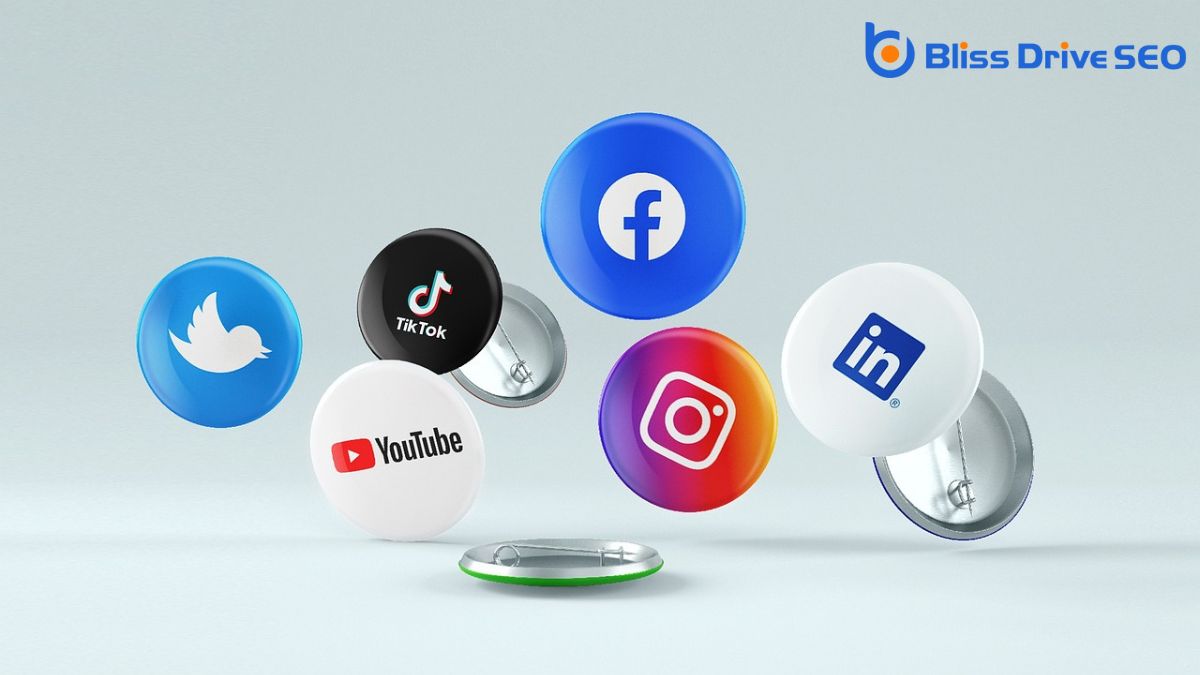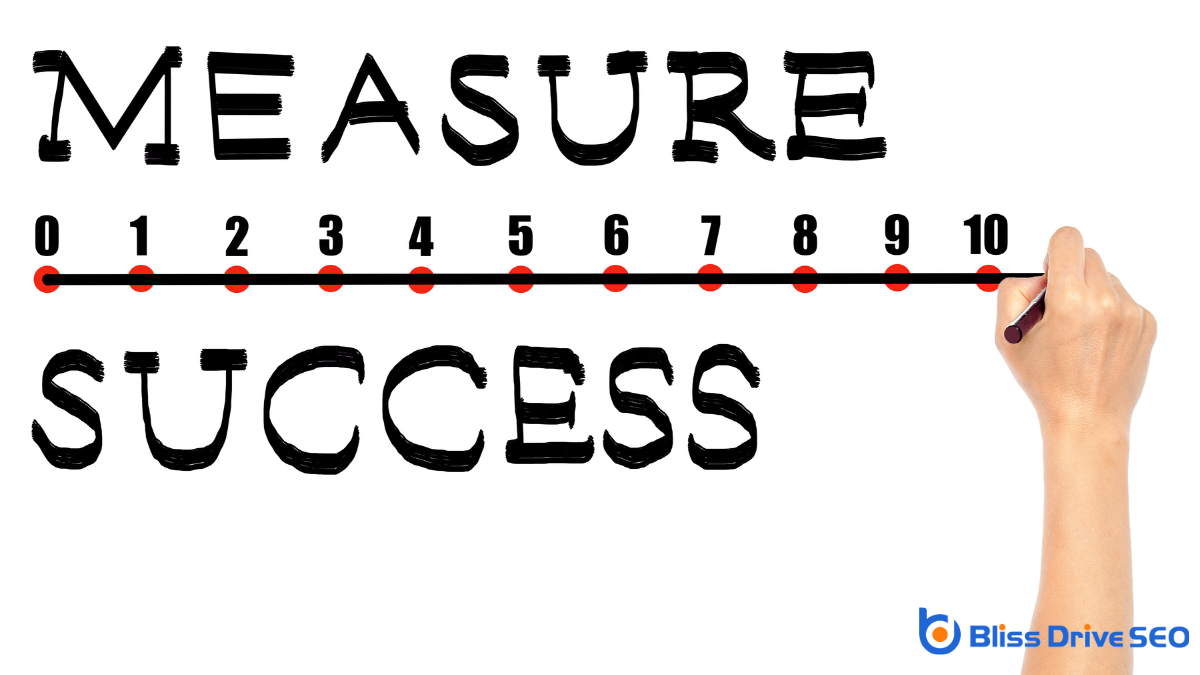PRICING
SERVICES
DIGITAL MARKETING SERVICES
COMPETITIVE ANALYSISSEO SERVICESCONVERSION RATE OPTIMIZATIONWEB DESIGNCONTENT MARKETINGPAY PER CLICKRESOURCES
To achieve a seamless blend of CTAs and content for SEO, it's vital to integrate action prompts naturally amidst valuable information. By strategically placing CTAs after key insights, you can enhance user engagement without interrupting the flow. But how do you guarantee these prompts resonate with your audience while optimizing for search engines? There's a fine balance to strike, and understanding this dynamic is fundamental for effective digital content.

When optimizing your website for search engines, don't underestimate the power of effective Calls to Action (CTAs). They play a vital role in guiding visitors through your site, encouraging engagement, and ultimately driving conversions.
Search engines favor sites that provide a seamless user experience, and CTAs are key to achieving that. They help structure your content, making it more accessible and actionable for users.
You'll find that well-placed CTAs improve site navigation, reducing bounce rates and enhancing dwell time—two factors search engines consider for ranking.
To craft compelling CTAs that achieve maximum impact, it’s crucial to understand your audience's motivations and needs.
You're not just asking them to click; you're engaging them by addressing their desires and solving their problems. Start by using action-oriented language that clearly conveys the benefit or value they’ll receive.
Keep your CTAs concise but powerful, ensuring they stand out visually on the page. Personalization can make a significant difference, so tailor your CTAs to resonate with your specific audience segments.
Consider the emotional triggers that drive decisions—whether it's urgency, curiosity, or a sense of belonging.
Test different approaches to see what resonates best. Remember, a well-crafted CTA isn't just a prompt—it's an invitation to take the next step with you.
Integrating CTAs seamlessly into your content can greatly enhance user engagement and conversion rates. To achieve this, guarantee your CTAs are relevant and naturally fit within the context of your content.
Use action-oriented language that clearly tells readers what you want them to do, like "Download your free guide" or "Sign up now." Position CTAs where they make the most sense, such as after sharing valuable insights or at the end of a compelling section. Test different placements to see what works best for your audience.
Additionally, make sure your CTAs stand out visually. Use contrasting colors and bold fonts to grab attention without overwhelming the reader.
Achieving a harmonious balance between keyword optimization and CTA placement is essential for effective SEO and user engagement. You need to guarantee your content is rich with relevant keywords without overshadowing the natural flow of your message.
Keywords should be strategically placed to maintain readability and not distract the reader. When incorporating CTAs, align them with your keywords to reinforce your message and guide users naturally toward action.
Place CTAs where they fit seamlessly into the content, making sure they’re not forced or awkward. Keep your audience’s reading experience smooth by avoiding keyword stuffing near CTAs.
Instead, focus on creating compelling, relevant content that naturally leads users to your CTAs. This balance will enhance both your SEO performance and user interaction.
How do you guarantee your CTAs resonate with your audience? Start by analyzing user intent.
Understand what your audience wants when they visit your site. Are they seeking information, looking to make a purchase, or comparing options? By identifying these motivations, you can tailor your CTAs to align with their needs.
Use tools like Google Analytics to track user behavior and uncover patterns. Look at search queries and page views to grasp their intent.
Craft your CTAs with language that speaks directly to their goals. For instance, if users are in research mode, a “Learn More” button might be effective. If they're ready to buy, a “Buy Now” CTA could be more compelling.
Aligning CTAs with intent enhances engagement.
Once you've tailored your CTAs to align with user intent, it's important to guarantee they're effective. Start by tracking key metrics like click-through rates (CTR), conversion rates, and bounce rates. These indicators help you understand how well your CTAs are performing.
Use tools like Google Analytics to monitor user behavior and see where visitors drop off. A/B testing is essential; experiment with different CTA placements, colors, and wording to find what resonates best with your audience.
Pay attention to user feedback and engagement levels, as they offer valuable insights into your audience’s preferences. By consistently analyzing this data, you'll discover what works and what needs improvement, ensuring your CTAs drive the desired actions and support your SEO goals.

While ensuring your CTAs are effective is essential, adapting your overall strategy is equally important for ongoing SEO success. SEO isn’t a one-time task but a continuous process that demands attention and refinement.
Consider the following to keep your strategy on track:
To master the art of balancing CTAs and content for SEO, focus on creating engaging, relevant CTAs that naturally fit within your content. Use strategic keyword placement to enhance visibility and guarantee your CTAs align with user intent. Regularly analyze performance metrics to refine your approach, keeping your strategy dynamic and responsive. By doing so, you'll boost user engagement, improve search rankings, and ultimately achieve ongoing SEO success. Remember, it’s all about harmony and relevance.
Linking new content to old content effectively involves more than just inserting hyperlinks. You need to identify themes that resonate across both pieces. By strategically placing links with clear, descriptive anchor text, you not only guide readers to valuable resources but also boost your website's SEO. This process enhances user engagement and distributes page authority. What's the secret to mastering this art? Let's explore the strategies that make your content connections impactful.
While traversing the vast digital landscape, understanding the importance of content interlinking becomes essential. You're not just connecting pages; you're creating a web of information that enriches user experience and boosts site navigation.
When you interlink content, it helps search engines like Google better understand your site's structure, leading to improved rankings. Every link acts as a pathway guiding visitors, encouraging them to explore more. This increases the time they spend on your site, reducing bounce rates and potentially increasing conversions.
Moreover, interlinking distributes page authority across your site, ensuring that no page stands alone. It's like building a community where each page supports another, creating a cohesive and engaging experience for your audience.
Embrace this strategy, and watch your content thrive.

As you explore identifying relevant content connections, start by analyzing the themes and topics that naturally align with each other.
Look for opportunities where your new content complements existing articles. This approach helps create a seamless user journey and enhances the value of your site.
To effectively identify connections, consider the following:
When you're linking new content to old, using descriptive anchor text is key to guiding readers and search engines effectively.
Make sure your anchor text maintains contextual relevance to enhance user experience and search engine understanding.
But be cautious—avoid over-optimization to keep your content natural and engaging.
Effective communication hinges on clarity, and choosing descriptive anchor text is no exception. When you link new content to old, using precise and meaningful anchor text helps readers understand what to expect before they click.
To enhance comprehension, focus on crafting anchor text that's straightforward and informative.
Here's what you should aim for:
While linking new content to old, maintaining contextual relevance is key to utilizing anchor text effectively. You want your readers to feel a seamless flow between topics, ensuring the link's connection is clear and logical.
When crafting anchor text, make sure it naturally fits within the surrounding content. This means using language and phrases that relate directly to both the new and old articles. Doing so helps readers understand why they should click the link and how it adds value to their experience.
Contextual relevance not only enhances user experience but also signals to search engines that your content is well-structured and informative. By focusing on context, you strengthen the linkage between your articles, making them more engaging and valuable.
Although using anchor text is a powerful tool for linking your content, it's important not to fall into the trap of over-optimization. When you use the same keywords repeatedly, search engines might view it as spammy.
Instead, aim for a natural and diverse approach to anchor text. Here's how you can do it effectively:
When you strategically link new content to existing pages, you boost your site's search engine rankings and make your content more discoverable.
Internal links help search engines understand the structure of your website, leading to better indexing.
To boost your search engine rankings, leveraging internal linking is an essential strategy that can't be overlooked. By strategically linking your new content to relevant old content, you guide search engines through your site, enabling them to understand your content's structure and hierarchy.
This process helps distribute "link juice" across your pages, enhancing their authority and relevance.
Consider these benefits:
Implementing internal linking wisely is key to optimizing your site's SEO performance.
While traversing the vast digital landscape, ensuring your content is easily discoverable is essential for driving traffic and engagement. You can achieve this by thoughtfully linking new content to existing pieces.
Internal linking not only guides your audience through your website, but it also helps search engines understand the structure and relevance of your content. By creating a well-linked web of information, you make it easier for users to find related topics, keeping them on your site longer.
To maximize discoverability, use descriptive anchor text that tells readers what to expect when they click the link. Regularly audit your existing content to identify linking opportunities, as this keeps your site dynamic and interconnected.

Steering through the vast landscape of internal linking can feel overwhelming, but several innovative tools and plugins are designed to simplify this task.
They manage links efficiently and guarantee your content is well-connected. You'll find that these tools offer features like:
Keeping your content connections up-to-date is essential for maintaining a seamless user experience and optimizing SEO performance. Start by regularly auditing your website to identify broken links or outdated references. Use tools like Google Search Console to track link performance and pinpoint issues.
When you find broken links, update them with relevant, current content to keep users engaged.
Don't just focus on fixing problems, though; proactively look for opportunities to enhance your content network. As you add new content, consider how it connects with existing pieces. Is there a recent article that complements an older post? Make the connection.
By strategically linking new content to old, you enhance user engagement and boost your site's SEO. Focus on identifying relevant themes and topics to create meaningful connections. Use concise, descriptive anchor text to guide readers seamlessly through your content. Leverage tools and plugins to simplify the process, ensuring your internal links are effective and up-to-date. Regularly monitor and update these connections to maintain their relevance, ultimately improving your website's authority and user experience.
When considering content strategy, you might wonder about the impact of internal linking. It's not just about connecting pages; it's about guiding visitors smoothly through your site and enhancing their experience. By optimizing these links, you can boost SEO and improve your site's authority. But how exactly does this work, and what are the best practices? There's more to uncover about how internal linking can transform your content approach.
When you strategically use internal linking, you greatly enhance user navigation and experience on your website. By connecting related content, you help visitors easily find the information they need without having to dig through multiple pages. This seamless navigation keeps users engaged and encourages them to explore more of your content.
Think of internal links as signposts guiding your audience through your website. They reduce frustration and make your site more intuitive. Users appreciate when you anticipate their needs by providing relevant links that enrich their journey and understanding of your content.
Additionally, internal links allow users to discover older, valuable posts they might've missed otherwise. This not only improves their experience but also increases the chances they'll return to your site, fostering loyalty.

By incorporating internal linking into your content strategy, you not only enhance navigation but also boost your site's SEO and page authority.
When search engines crawl your site, they follow internal links to understand the hierarchy and relationship between pages. This helps them index your content more effectively, improving your site's visibility in search results.
Internal links distribute link equity, which contributes to page authority, across your website. By strategically linking to key pages, you signal their importance to search engines, potentially improving their ranking.
Additionally, internal links keep users engaged, decreasing bounce rates, and increasing time spent on your site. These factors combined can greatly enhance your SEO efforts, helping your content reach a wider audience and achieve better search engine performance.
To enhance your site's visibility, structuring content for better indexing is essential. Start by organizing your content with clear, logical headings and subheadings. This helps search engines understand your content's hierarchy and relevance.
Use descriptive, keyword-rich titles and meta descriptions to give clarity to both users and search engines.
Implement internal links to connect related content, guiding crawlers through your site efficiently. This not only helps search engines index your site thoroughly but also keeps users engaged by providing additional, relevant information.
Make sure your URLs are clean and descriptive; avoid long strings of numbers or irrelevant characters.
Keep your content fresh and up-to-date. Regularly updating your pages signals to search engines that your site is active and worth indexing.
Although a well-structured website is essential, ensuring content discoverability is equally important for driving traffic and engagement. By strategically placing internal links, you guide visitors to related topics, engrossing their interest and encouraging them to explore further. This not only keeps users on your site longer but also helps them find the exact information they're seeking.
Internal links act like a roadmap, leading users from one valuable piece of content to another. They help avoid dead ends, reducing bounce rates and enhancing the overall user experience.
When you effectively interconnect your content, you empower visitors to uncover hidden gems within your site, which they might've otherwise missed. Ultimately, this boosts your site's authority and strengthens your audience's trust in your content.

Building on the importance of content discoverability, implementing effective internal linking practices becomes your next focus. By doing so, you enhance user experience and boost your site's SEO.
Start with a strategic approach:
Incorporating internal linking into your content strategy is vital for improving user navigation and enhancing their experience. You'll boost your SEO efforts and strengthen page authority by helping search engines better understand your site's structure. Properly linking content guarantees your pages are indexed effectively, making them more discoverable. By implementing effective internal linking practices, you'll reduce bounce rates and encourage users to explore further, ultimately driving greater engagement and building trust in your content.
When you search online, you often use more than just a single word to find what you need. That's where keyword phrases come into play. They're specific combinations of words that reflect your intent, like "best Italian restaurant near me." Knowing how to craft these phrases can make a big difference in online visibility and engagement. Curious about how to use them effectively for SEO? Let's explore their impact and how they connect users to the right content.
Keyword phrases are the backbone of effective search engine optimization.
You need to understand that a keyword phrase is a series of words users type into search engines to find specific information.
It's not just a single word but a combination that reflects what potential visitors are seeking.
For example, instead of searching for "shoes," a user might type "comfortable running shoes for women."

Recognizing the function of keyword phrases sets the foundation for understanding their role in SEO.
They're not just random words; they connect your content with what people search for online. When you use keyword phrases effectively, you increase your website's visibility on search engines, driving more traffic your way.
Here's why they're important:
Understanding the differences between keywords and keyword phrases is essential for an effective SEO strategy. A keyword is a single word that represents a core topic or concept, like "shoes" or "books." Keywords are broad and attract a wide audience. However, they're often too generic to capture specific search intent.
On the other hand, keyword phrases, also known as long-tail keywords, consist of multiple words, such as "comfortable running shoes" or "best mystery books for teens." These phrases target more precise search queries, helping you connect with users who know exactly what they're looking for.
To identify effective keyword phrases, first consider the search intent behind the terms people use.
Focus on long-tail keywords, as they're often less competitive and can target specific audiences more accurately.
Don't forget to assess the competition level to guarantee your chosen phrases have a good chance of ranking well.
How do you accurately gauge the intent behind a search query to identify effective keyword phrases? Understanding search intent is essential for selecting relevant keywords.
Start by considering what the user wants to accomplish with their search. Are they looking to buy, learn, or navigate a specific site?
To identify effective keyword phrases:
While broad keywords often attract high search volumes, long-tail keywords are invaluable for targeting specific user intents and niches. You might wonder, what exactly are long-tail keywords?
They're longer, more specific phrases that users enter when they're closer to making a decision or seeking precise information. For example, instead of "diet tips," someone might search for "vegan diet tips for beginners." By focusing on these detailed queries, you can connect with users who've clearer needs and are more likely to engage with your content.
To identify effective long-tail keywords, think about the specific questions or problems your audience faces. Tools like Google's Keyword Planner or AnswerThePublic can help you unearth these gems, ensuring your content aligns perfectly with user intentions.
When you're selecting keyword phrases for your content, considering the competition level is essential. It helps guarantee your content stands a chance to rank well. High competition keywords might seem appealing, but they're often harder to rank for, especially if you're just starting.
Instead, focus on finding a balance between relevance and competition. Here's how you can evaluate keywords competition effectively:
When you're exploring keyword phrases, it's essential to recognize how different industries utilize them.
In the technology sector, phrases like "cloud computing solutions" and "cybersecurity services" are common, while the healthcare industry often uses terms such as "patient care management" or "medical billing software."
Understanding these distinctions can help you tailor your content to meet industry-specific needs and improve search visibility.
As the technology industry evolves rapidly, understanding the right keywords becomes essential for standing out in a crowded market.
You need to know how to connect with your audience effectively using targeted keyword phrases. These phrases should reflect current trends and innovations while addressing your audience's specific needs.
Here are three examples of keyword phrases you might consider:
The healthcare sector also demands precise keyword phrases to effectively reach its audience. When you're crafting content for this industry, it's vital to use terms that resonate with both patients and professionals. For instance, "pediatric care services," "cardiology specialists near me," or "mental health therapy options" are examples that can connect you to the right audience.
These phrases help guarantee your information is visible to those searching for specific services or expertise. Incorporating keywords like "telemedicine solutions" or "chronic pain management" into your content can also enhance searchability.
It's important to think about what people are actually typing into search engines. By understanding their needs, you can tailor your language to match their search intent, making your content more relevant and accessible.
Although it's tempting to fill your content with as many keywords as possible, implementing keyword phrases effectively requires a strategic approach. You need to guarantee that your content remains engaging and readable.
Overstuffing keywords can lead to a poor user experience and even penalties from search engines. Instead, focus on the following:

When you're aiming to optimize your content for search engines, harnessing the right tools for finding and analyzing keyword phrases is essential.
Start with Google Keyword Planner; it's free and provides insights into search volume and competition. For a more thorough analysis, consider tools like SEMrush or Ahrefs. These platforms offer in-depth data on keyword difficulty, potential traffic, and competitor insights.
Don't overlook Ubersuggest, which suggests related keywords and shows trends over time. To refine your choices, explore Google Trends for seasonal popularity.
Always prioritize relevance to your audience and actual search intent. With these tools, you'll identify high-impact keywords that align with your content goals, ultimately boosting your visibility and engagement.
To summarize, mastering keyword phrases is essential for boosting your website's visibility and connecting with your audience. By understanding their significance and knowing how to identify and implement them effectively, you can create content that resonates with users' search intents. Leverage tools to analyze and refine your keyword strategy, ensuring you're always one step ahead in the competitive world of SEO. Remember, it's not just about traffic—it's about attracting the right visitors to your site.
Bad content marketing happens when you lack a clear strategy, leading to scattered efforts. Without understanding your audience, your content won't resonate and can stray off-topic, missing the mark completely. Low-quality content damages your brand's reputation, and an inconsistent publishing schedule causes disengagement. Ignoring SEO best practices and essential content performance metrics means you won't reach your target audience effectively. In addition, failing to engage with your audience can diminish their loyalty. Mastering these aspects can transform your content marketing efforts and enhance your brand's connection with your audience. Discovering the keys to great content marketing can change your strategy.
A rudderless ship won't reach its destination, and the same goes for content marketing without a clear strategy. You might have the best intentions, but without a plan, your efforts can scatter in different directions, never truly hitting the mark.
Imagine creating content without knowing why you're doing it or who it's for. It's easy to get lost in the sea of online content, and without a clear strategy, your message could vanish like a whisper in a storm.
When you establish a content strategy, you set a course. You define goals, understand your objectives, and allocate resources effectively. It's like plotting a map for your content journey. You decide what kind of content to create, how frequently to post, and what platforms to utilize.
This way, every piece of content has a purpose aligned with your objectives, ensuring consistency and direction.
Without a strategy, you risk wasting time and resources on content that doesn't resonate or achieve desired outcomes. You need to plan to measure success and optimize efforts.

Understanding your audience is the cornerstone of effective content marketing. Without this understanding, your efforts can fall flat. You might create content that doesn't resonate simply because you haven't taken the time to know who you're talking to. When you don't fully grasp your audience's needs, preferences, and pain points, you risk alienating them.
To avoid poor audience understanding, start by defining who your ideal customer is. Conduct research to gather insights into their interests, challenges, and motivations. Use surveys, social media analytics, and customer feedback to build a detailed profile. This helps you tailor your content to speak directly to them, making it more engaging and relevant.
Moreover, you need to stay updated on changes within your audience. People's interests and needs evolve, and your content should too. Regularly revisit your audience research and adjust your strategies accordingly.
Why does content sometimes miss the mark? It's often because it strays into irrelevant or off-topic territory. When you create content, it's essential to stay focused on your audience's needs and interests. If your content doesn't align with what your audience wants or expects, they'll quickly lose interest.
Imagine you're looking for advice on gardening, but you find an article that spends more time discussing cooking techniques. It's frustrating and a waste of your time, right? The same principle applies to your own content creation.
To keep your content relevant, start by clearly defining your topic and purpose before diving into writing. Ask yourself: Does this piece directly address a problem or question my audience has? Maintain a concentrated focus on delivering value by staying on-topic. Avoid digressions that could confuse or alienate your readers.
Additionally, regularly revisit your content strategy to confirm alignment with your audience's evolving interests. By doing so, you'll create content that's not only relevant but also engaging. Remember, the goal is to provide your audience with insightful, on-point information that meets their needs and encourages them to keep coming back for more.
While keeping content relevant is important, ensuring its quality is equally essential. You might think you can save time by churning out content quickly, but low-quality content can damage your brand's reputation.
When your audience encounters poorly written articles, grammatical errors, or confusing structure, their trust in your brand diminishes. They mightn't return, and worse, they could spread the word about your lackluster content, which could tarnish your image further.
To avoid this, focus on producing well-researched and thoughtfully crafted content. High-quality content requires attention to detail and a commitment to delivering value.
Ask yourself if your content answers questions, solves problems, or provides useful insights. When you create content that genuinely engages your audience, it reflects positively on your brand, building trust and loyalty.
When you don't stick to a consistent publishing schedule, you risk losing your audience's interest and trust. They expect reliable content, and when you fail to deliver, it damages your brand's credibility. Maintaining a steady flow of content keeps your audience engaged and reinforces your brand's reputation.
A consistent publishing schedule is crucial for maintaining audience engagement and failing to stick to one can lead to disengagement and loss of interest. When your audience knows when to expect new content, they're more likely to return and engage with it. They build a habit around your schedule, eagerly anticipating your next post. If you're inconsistent, this rhythm is disrupted, causing your audience to lose track and possibly forget about you entirely.
Imagine you're a reader who checks a blog every Monday. If the posts start appearing randomly, you'll likely stop checking. This inconsistency makes it difficult for your audience to rely on you for regular content, leading to frustration and eventual disengagement.
Keep in mind that engagement isn't just about consuming content; it's about fostering a relationship. Inconsistency can make your audience feel undervalued as if they're not important enough to warrant a regular update.
To keep your audience engaged, commit to a schedule that's realistic for you. It's better to post less frequently but consistently than to promise more than you can deliver. Consistency builds trust, while inconsistency erodes it, driving your audience away.
Reliability stands as the cornerstone of brand credibility, and an inconsistent publishing schedule can severely undermine it. You want your audience to trust you, and when you fail to deliver content on a regular basis, they may question your reliability. An erratic publishing rhythm leaves your audience uncertain about when to expect new content, which can lead to frustration and disinterest. Consistency in publishing helps build a routine that your audience can depend on, fostering trust and loyalty.
Imagine subscribing to a magazine that arrives sporadically, sometimes missing an issue entirely. You'd likely reconsider your subscription, right? The same principle applies to your content. When you're inconsistent, you risk losing your audience's interest and damaging your brand's reputation. They might start looking elsewhere for the information or entertainment they seek.
To maintain brand credibility, establish a publishing schedule that's realistic and sustainable. Don't overcommit; instead, focus on delivering quality content consistently. This approach not only keeps your audience engaged but also signals professionalism and dependability.
Overlooking SEO best practices can greatly hinder your content's visibility and reach. When you ignore SEO, you're essentially making it harder for your audience to find your content online. Search engines won't prioritize your content, and it will be buried under countless other pages. To avoid this, you need to understand the importance of optimizing your content for search engines.
Consider these critical SEO elements:
Ignoring these best practices means you're missing out on organic traffic, which can be a significant source of new leads and customers.
Embrace SEO to boost your content's effectiveness and make sure it reaches the right audience.
While optimizing your content for search engines plays a crucial role in enhancing visibility, understanding how your content performs once it's live is equally significant. You can't just set it and forget it. Ignoring the performance metrics of your content is like driving with your eyes closed; you won't know if you're heading in the right direction. By overlooking these metrics, you're missing out on valuable insights that could guide your future content strategy.
Start by tracking key performance indicators (KPIs) like page views, bounce rate, time on page, and conversion rates. These metrics offer a clear picture of what resonates with your audience and what's falling flat. If you notice that a particular post has a high bounce rate, it might indicate that the content isn't meeting user expectations.
Conversely, content with a longer time on the page might suggest it's engaging or informative.
Use tools like Google Analytics to gain these insights. This data allows you to tweak your content strategy, making it more effective. Without it, you're essentially flying blind, risking wasted effort and resources. Embrace these performance metrics to refine your approach and achieve better results.

Amidst the hustle of content creation, failing to engage with your audience is a costly error. You might produce high-quality content, but if it doesn't resonate with your audience, it's like speaking into a void. Engagement isn't just an afterthought; it's an essential component of effective content marketing. Without it, your content is just noise, not the meaningful conversation you intend.
To make sure you're engaging effectively, consider these key strategies:
In bad content marketing, you're missing the mark by not having a clear strategy or understanding your audience. When you produce irrelevant or low-quality content and ignore SEO best practices, you're setting yourself up for failure. Inconsistent publishing and overlooking performance metrics further weaken your efforts. Most importantly, if you fail to engage with your audience, you're losing the chance to build meaningful connections. To succeed, prioritize these areas and watch your content thrive.
The best content marketing begins with grasping your audience's needs and crafting stories that resonate with them. Immerse yourself in their world to identify their challenges and preferences. Use data and analytics to steer your strategy and incorporate multimedia formats like videos and infographics for compelling delivery. Embrace SEO best practices to enhance your content's visibility. Stay agile by monitoring trends and experimenting with new ideas. Measure success through key performance indicators to guarantee ROI. Effective content marketing is a combination of these elements, and delving deeper will assist you in unleashing its full potential.

Grasp the essence of successful content marketing by first understanding your audience's needs. To truly connect with your audience, you must dive deep into their world, recognizing their desires, challenges, and preferences. Start by identifying who they are. Are they young professionals, busy parents, or tech-savvy millennials? Each group has distinct characteristics that shape their content consumption habits.
Next, engage with them directly. Use surveys, social media interactions, and feedback forms to gather insights about their interests and pain points. By listening to their concerns, you can tailor your content to address their specific problems, making it more relevant and valuable.
Analyze data from your website and social media platforms to uncover patterns in their behavior.
What types of content do they engage with the most?
What topics generate the most discussions or shares?
These insights are essential in refining your content strategy.
A compelling story can be the heartbeat of your content marketing, resonating deeply with your audience and forging a lasting connection. By weaving narratives that speak to the emotions, aspirations, and challenges your audience faces, you create a bridge that transforms casual readers into loyal followers.
Start by identifying the core message you want to convey and the emotions you want to evoke. Great stories often revolve around conflict and resolution, so consider the challenges your audience encounters and how your product or service provides a solution.
When crafting your story, use relatable characters and settings that your audience can see themselves in. Personalize the narrative by addressing their specific pain points and goals. Remember to keep your language clear and engaging—avoid jargon that might alienate or confuse you.
Also, show authenticity in your storytelling. Audiences can sense when a narrative is genuine versus when it's merely a sales pitch. Share real-life examples, testimonials, or case studies that illustrate the impact of your offerings.
Harnessing the power of data and analytics can transform your content marketing strategy, providing insights that drive smarter decisions and more effective campaigns.
By diving into the data, you gain a clearer understanding of your audience's preferences, behaviors, and needs. This information helps you tailor content that truly resonates with them, ensuring relevance and engagement.
Start by tracking key metrics like page views, bounce rates, and conversion rates. These numbers tell you what's working and what's not. Don't just focus on the surface-level stats; dig deeper. Look at user demographics and behavior patterns to segment your audience effectively. With this knowledge, you can customize content strategies for different groups, maximizing impact.
Analytics tools like Google Analytics or social media insights platforms offer a wealth of information. Use them to monitor trends and identify opportunities for new content ideas. By analyzing past performance, you can predict future success, aligning your content with strategic goals.
Incorporating multimedia formats into your content marketing strategy can elevate your audience's engagement and enhance message delivery. By mixing text with images, videos, and interactive elements, you're creating a richer experience that captures attention and keeps users interested. People process visuals faster than text, so integrating these elements can clarify complex information quickly.
Start with images that complement your text. Infographics are a great way to present data visually, making it easier for your audience to grasp key points.
Videos are another powerful tool, offering dynamic storytelling and deeper connection. They can demonstrate product features, share customer testimonials, or explain concepts in an engaging way. Remember, though, to keep them concise and focused on your message.
Interactive content like quizzes, polls, or clickable maps invites participation, encouraging users to spend more time with your material. This not only boosts engagement but also provides valuable insights into your audience's preferences.
To get your content noticed, you'll need to embrace SEO best practices that enhance visibility and drive organic traffic. SEO is essential for guaranteeing your content reaches the right audience and stands out in search engine results. By optimizing your content, you can increase its chances of being discovered by those searching for the information you provide.
Here are four necessary SEO strategies to implement:
To stay ahead in content marketing, you need to keep an eye on emerging trends and adapt your strategies quickly. By leveraging real-time data, you can make informed decisions that align with current consumer interests. This agility not only keeps your content relevant but also gives you a competitive edge.
Staying ahead in content marketing often requires a keen eye for monitoring emerging trends. It's crucial to stay informed so you can create content that resonates with your audience. By keeping an eye on the latest developments, you'll be better positioned to deliver relevant and engaging material. Here's how you can effectively monitor trends:
Once you've got a handle on emerging trends, the next step is to adapt your strategies rapidly to stay agile. Embracing change quickly can keep you ahead of the curve and guarantee your content remains relevant. Start by evaluating what's working and what isn't.
Look at your current content and ask yourself if it aligns with the latest industry trends. If not, it's time to pivot.
To adapt effectively, streamline your approval processes. Slow decision-making can hinder your ability to react promptly. Empower your team to make quick calls on content adjustments. This way, you're not bogged down by bureaucratic bottlenecks.
Experimentation is key. Don't be afraid to try new formats or platforms that align with current trends. Test different approaches and monitor their performance closely. If a new idea doesn't work, move on swiftly without dwelling on it. Flexibility will be your greatest asset.
Also, keep communication open within your team. Regularly discuss trends and share insights. This collective knowledge helps people make informed decisions quickly. Remember, staying agile doesn't mean chasing every trend. It's about being selective and aligning with those that resonate most with your brand and audience.
Harnessing real-time data is crucial for maintaining agility with evolving trends. By keeping a pulse on what's happening now, you can guarantee your content resonates with your audience. Real-time data helps you understand shifts in consumer interests and preferences, enabling you to adjust your strategies quickly.
Here's how you can leverage real-time data effectively:

To truly understand the impact of your content marketing efforts, focus on tracking Key Performance Indicators (KPIs) that align with your goals.
Analyze conversion rates to see how effectively your content turns visitors into customers.
Don't forget to evaluate the cost-benefit ratio to guarantee your strategy is both effective and efficient.
When evaluating the success of your content marketing efforts, it's important to focus on key performance indicators (KPIs) that align with your business goals. These metrics help you determine whether your strategies are effective and where you might need to make adjustments. By tracking the right KPIs, you'll gain valuable insights into how your content is performing and its impact on your overall objectives.
Here are four essential KPIs to ponder:
Understanding conversion rates is essential in measuring the success and ROI of your content marketing efforts. When you create content, the ultimate goal is to inspire action—whether that's signing up for a newsletter, purchasing a product, or downloading a resource. Conversion rates help you determine how effectively your content achieves these goals by showing the percentage of visitors who take the desired action.
To analyze conversion rates, start by identifying your specific conversion goals. Once you've set these targets, use tools like Google Analytics to track user behavior. Pay attention to metrics like bounce rates and time on the page to understand how users interact with your content. If you notice low conversion rates, it might indicate that your content isn't engaging or persuasive enough.
Experiment with different elements of your content, such as headlines, calls to action, and visuals, to see what resonates best with your audience. A/B testing can be particularly useful in determining what changes lead to higher conversion rates. Keep in mind that even small adjustments can have a significant impact.
Evaluating the costs and benefits of your content marketing strategy is necessary for measuring its success and ROI. You need to know whether the resources you're investing in your campaigns are yielding the desired outcomes. This involves a careful analysis of both tangible and intangible factors. Here's how you can evaluate effectively:
With these steps, you'll gain a clearer picture of your content marketing's return on investment, allowing for more informed decisions.
To excel in content marketing, you need to understand your audience's needs and craft compelling stories that resonate with them. Use data and analytics to guide your strategy, and don't hesitate to integrate multimedia to keep your content engaging. Embrace SEO best practices to guarantee your content reaches the right eye. Stay agile and adapt to trends quickly. Finally, always measure your success and ROI to refine your approach and maximize your impact.
Content marketing remains king in today's digital era. You'll discover it is necessary to foster trust and engage audiences effectively. With the evolution of content strategies, platforms like social media, podcasts, and videos take center stage, enabling you to reach broader audiences. Customizing content for specific platforms and embracing AI-driven personalization can improve user experience. Social media revolutionizes how you distribute content, facilitating real-time interaction and feedback. Effective strategies balance traditional and innovative tactics, utilizing influencers and upholding SEO to ensure visibility. If you're curious about how these elements make content marketing unparalleled, there's a plethora of information to explore.

Content strategies have come a long way, evolving from mere blog posts to sophisticated, multi-channel campaigns. You might remember when simply having a blog was enough to capture attention. Now, it's about weaving a cohesive narrative across various platforms—social media, podcasts, videos, and more. This evolution means you're not just creating content; you're crafting experiences that engage your audience on multiple fronts.
To stay relevant, you need to grasp that each platform has its unique language and culture. For instance, a tweet differs greatly from a YouTube video or an Instagram story. By tailoring your message to each channel, you guarantee it resonates effectively. It's not just about spreading a single message but adapting it to fit different contexts and audiences.
You also have to take into account how your audience's consumption habits have changed. With the rise of mobile devices, people expect quick, digestible content. As a creator, it's vital to deliver value swiftly and efficiently.
As you navigate the world of content marketing, you'll notice emerging digital platforms are reshaping how you connect with your audience. New engagement tactics are vital to capture and maintain attention in this rapidly changing landscape.
Additionally, influencer partnerships can amplify your reach, but it's important to weigh their impact against traditional content strategies.
In today's quickly changing digital landscape, something intriguing is happening with the emergence of new platforms that are reshaping how marketers reach their audiences. As you're exploring through content marketing, it's vital to recognize these platforms' potential impact.
From TikTok to Clubhouse, these digital spaces offer unique ways to connect with audiences, often requiring a fresh approach compared to traditional content strategies. You may find that these platforms emphasize brevity and creativity, demanding you tailor your content to fit their unique styles.
TikTok thrives on short, engaging video clips, while Clubhouse focuses on audio, fostering direct and real-time interactions. These new formats can enhance engagement, but they also challenge you to rethink how you convey your brand's message.
With the rise of these platforms, you might wonder if they signal a shift away from traditional content marketing. Instead of replacing tried-and-true methods, they complement them by offering additional avenues to reach diverse audiences. By integrating these emerging platforms into your strategy, you can broaden your reach and stay competitive.
The key lies in understanding each platform's nuances, allowing you to leverage their distinct strengths effectively.
To truly engage your audience, you need to balance traditional content marketing tactics with new trends that are revolutionizing the digital space. Start by focusing on creating valuable, relevant content that addresses your audience's needs. This approach builds trust and establishes your brand as an authority.
However, don't rely solely on traditional methods. Embrace new technologies like AI-driven content personalization, which tailors messages to individual preferences, enhancing the user experience.
Interactive content is another trend you shouldn't ignore. Quizzes, polls, and interactive videos encourage participation, making your audience feel involved and connected. These formats not only entertain but also provide insights into your audience's preferences, helping you refine your strategy.
In addition, leverage the power of storytelling. Narratives resonate emotionally, making your content more memorable. Use data-driven storytelling to share insights that engage and inform, demonstrating your brand's expertise.
Influencer partnerships have significantly transformed the landscape of content marketing, offering brands unprecedented reach and authenticity. By collaborating with influencers, you're tapping into their established trust and engagement with their audience. This connection allows your brand to be more relatable and genuine, which traditional marketing methods often struggle to achieve.
When you align with an influencer whose values mirror your brand, it resonates more with potential customers. It's not just about reach but also about the quality of the audience engagement. Influencers craft content that's not only persuasive but also visually appealing and relatable. They know their audience well, ensuring that the content aligns with your marketing goals.
However, you must choose influencers wisely. Finding someone who authentically represents your brand message is essential; otherwise, the partnership might seem forced, leading to skepticism among consumers. It's important to maintain transparency and clear communication with influencers to create a successful campaign.
In the ever-evolving world of content marketing, leveraging influencer partnerships can be a powerful strategy. It not only amplifies your message but also strengthens your brand's credibility and trustworthiness, which are crucial in today's digital age.
To truly understand how your content is performing, focus on analyzing key performance indicators like page views and bounce rates.
You should also pay attention to engagement metrics, such as comments and shares, to gauge audience interaction.
When evaluating the success of content marketing, numbers tell a compelling story. You need to focus on key performance indicators (KPIs) to measure how well your content performs and aligns with your goals. KPIs provide actionable insights that help you understand what's working and what needs improvement. They serve as a roadmap, guiding you toward more effective strategies.
Start by identifying the KPIs most relevant to your objectives. For instance, if your goal is to increase brand awareness, track metrics like page views and unique visitors. If generating leads is more your speed, look at conversion rates and the number of new subscribers. Sales-driven content should focus on revenue and customer acquisition costs.
While tracking KPIs is essential for understanding your content's success, analyzing engagement metrics provides a deeper insight into how your audience interacts with your content. These metrics go beyond views and clicks, helping you understand what truly resonates with your audience.
Start by looking at metrics like average time on the page, bounce rate, and social shares. These indicators reveal how captivating your content is.
When you notice a high average time on the page, it suggests that visitors find your content engaging and worth their time. A low bounce rate indicates that users are exploring more of your site, which signifies interest in your offerings. Social shares highlight content that encourages your audience to spread the word, amplifying your reach organically.
Don't forget to examine comments and user-generated content. These interactions can provide qualitative insights that numbers alone can't capture. They show how your audience perceives your content and can offer ideas for future topics.
Understanding conversion rate insights is essential for measuring the effectiveness of your content. When you know how well your content converts visitors into customers or leads, you can make informed decisions about your marketing strategies. Start by identifying your conversion goals—whether it's signing up for a newsletter, downloading an e-book, or making a purchase. Once you've set clear goals, track them using tools like Google Analytics to see how your audience interacts with your content.
You'll want to look at key metrics such as bounce rate, time on site, and pages per session. These can indicate how engaged your audience is before they decide to convert. If your bounce rate is high, consider revising your content to better match your audience's expectations or improve your call-to-action placement.
Also, perform A/B testing to compare different versions of your content or landing pages. This will help you pinpoint what drives conversions more effectively. By continuously analyzing and adjusting based on data, you'll refine your understanding of what works and increase your conversion rates over time. Remember, effective content doesn't just attract attention; it motivates action.
Tuning into consumer preferences is vital for any content marketing strategy that aims to stay relevant. You need to understand what your audience values and tailor your content accordingly. Start by collecting data on consumer behavior and preferences through surveys, social media interactions, and website analytics. These insights will help you identify trends and adjust your content to meet the evolving needs of your customers.
It's crucial to deliver content that resonates with your audience. Personalization is key here. By addressing your audience's specific interests and challenges, you create a connection that keeps them engaged. Consider segmenting your audience to offer targeted content that speaks directly to different groups.
For example, if your data shows a segment of your audience prefers visual content, focus on creating engaging videos or infographics.
Don't disregard feedback. Encouraging comments and reviews not only build a community but also provide valuable insights into what's working and what isn't. Use this feedback to refine your approach and create content that truly speaks to your audience. Remember, staying adaptable and responsive to consumer preferences guarantees your content remains effective and valued, maintaining your position in the market.
Building on the importance of aligning with consumer preferences, let's explore how SEO plays a pivotal role in content marketing.
You might wonder how SEO fits into the content puzzle. Well, it helps guarantee your content gets seen by the right people. By optimizing your content for search engines, you increase its visibility, making it easier for potential customers to discover what you have to offer.
SEO isn't just about sprinkling keywords throughout your content. It's about understanding what your audience is searching for and creating valuable content that meets those needs.
This means doing keyword research to find out what phrases your target audience uses. Then, you strategically incorporate those phrases into your content to improve your search rankings.
But remember, it's not just about pleasing search engines. You've got to focus on creating engaging, informative, and relevant content that provides real value to your readers.
When you do, you'll not only improve your search engine rankings but also enhance user experience, encouraging more people to stick around and explore your site.
In short, effective SEO is an essential component of a successful content marketing strategy, connecting you to your audience.
When you're building authentic connections through content marketing, you enhance your brand's credibility and trustworthiness.
Sharing valuable and genuine content can show your audience that you're not just about selling but also about providing meaningful insights.
This approach fosters a loyal customer base that believes in what your brand stands for.
Crafting authentic connections with your audience can transform your content marketing into a powerful trust-building tool. When you prioritize genuineness, you show your audience that you value their needs and interests. To do this, start by understanding who your audience is. Immerse yourself in their world—what they care about, their challenges, and what inspires them. This insight helps you tailor your content to resonate with their emotions and experiences.
Engage with your audience by encouraging dialogue. Use platforms like social media to nurture conversations and respond to comments and messages. This interaction shows you're listening and value their input.
Share stories that reflect your brand's values and mission, allowing your audience to see the human side of your business.
Honesty is essential. Be transparent about your products, services, and even your challenges. People appreciate brands that are upfront and genuine. When mistakes happen, acknowledge them and explain how you're addressing the issue. This transparency creates a sense of reliability.
Establishing trust through content marketing plays an essential role in enhancing your brand's credibility. When you create content that resonates, you're not just sharing information—you're building a relationship. Trustworthy content isn't just about honesty; it's about relevance and value. Your audience should feel that you're addressing their needs and concerns, not just promoting your products or services.
To boost credibility, focus on providing accurate, well-researched information. This shows your audience that you know your stuff and care about what you're sharing. Use testimonials and case studies to showcase real-world success stories. These elements act as social proof, reinforcing that others trust your brand and your audience can, too.
Engage with your audience by encouraging feedback and responding to comments or questions. This two-way communication demonstrates that you're listening and value their opinions. It makes your brand more approachable and human.
Also, ensure uniformity across all your platforms. Consistent messaging helps reinforce your brand's voice and values, making it easier for your audience to trust you.
In a world filled with choices, content marketing helps your brand stand out as a credible, trustworthy source. Prioritize trust, and watch your brand's reputation flourish.
As the digital landscape evolves, integrating AI into content creation has become a game-changer for marketers. You might wonder how AI can actually help you. Well, AI tools can streamline your content creation process by generating ideas, drafting articles, and even personalizing content for your audience. These tools analyze vast amounts of data to identify trends and insights, allowing you to create content that resonates with your audience more effectively.
Imagine you're tasked with creating a blog post. AI can help you research, outline, and draft it, saving you time and effort. By analyzing user behavior, AI also suggests the best tone and style to engage your readers. This means you can focus on refining and adding your unique voice rather than starting from scratch.
Moreover, AI can enhance SEO efforts by recommending keywords and optimizing your content for search engines. This guarantees your content ranks higher and reaches a broader audience. AI tools can even track performance, offering insights into what works and what doesn't. By embracing AI, you're not just keeping up with trends; you're setting yourself up for success in a competitive digital world.

The dynamism of social media has fundamentally transformed how content is created and consumed. You now have the power to reach audiences in real time, tailoring your message to resonate with diverse groups. Social media platforms have shifted the focus from long-form content to more engaging, bite-sized pieces that capture attention quickly. This shift has led to a more interactive and participatory content landscape.
Consider these three key impacts:
Understanding these impacts helps you harness social media's power effectively, ensuring your content remains relevant and engaging in an ever-evolving digital landscape.
To truly grasp the effectiveness of content marketing, looking at case studies of successful campaigns offers invaluable insights. Consider Red Bull's approach. They didn't just focus on selling an energy drink; they crafted an entire lifestyle brand through content. Their multimedia strategy included videos, articles, and events that resonated with an adventurous audience. This alignment with their consumers' interests built a community and markedly boosted brand loyalty.
Next, think about HubSpot. They pioneered inbound marketing by providing free, valuable content through blog posts, eBooks, and webinars. By educating their audience, they not only attracted potential customers but also positioned themselves as thought leaders in digital marketing. This strategy led to increased trust and a substantial growth in user base.
Another standout example is GoPro. They leveraged user-generated content, encouraging their customers to share videos and photos captured with GoPro cameras. This not only showcased their product's capabilities but also created authentic engagement, turning users into brand ambassadors.
These cases illustrate that successful content marketing isn't just about promotion. It's about understanding your audience, creating value, and fostering engagement that naturally leads to brand growth. By studying these examples, you can better implement your own effective content strategies.
While successful case studies offer valuable lessons, it's also important to look ahead and consider where content marketing is headed. As technology evolves, so does the way you engage with your audience. Understanding the future of content marketing helps you stay ahead of the curve and maintain a competitive edge.
You've seen how content marketing has evolved and adapted over time. By embracing new trends and technologies like AI, you can enhance your content strategy. Focus on measuring effectiveness and staying attuned to consumer preferences. Remember, SEO and social media play essential roles in amplifying your reach. Learning from successful case studies can guide your efforts. As you look ahead, content marketing continues to be a powerful tool for connecting with your audience and driving success.
Content marketing has been around longer than you might think. Benjamin Franklin's Almanac offered wit and advice, engaging readers annually. John Deere's The Furrow shared valuable farming tips, while the Michelin Guide entwined tire sales with fine dining. Jell-O's recipe booklets showcased creativity, turning desserts into family staples. Lego Club Magazine built a community beyond toys by nurturing creativity. Sears revolutionized shopping with extensive catalogs, while soap operas, sponsored by brands like Procter & Gamble, transformed branding through storytelling. Each example skillfully combined valuable content with product promotion, paving the way for today's strategies. Discover the stories behind these innovations.

Benjamin Franklin's "Poor Richard's Almanack" is a standout early example of content marketing, showcasing how valuable content can engage an audience and build a brand. Back in 1732, Franklin cleverly combined wit, wisdom, and practical advice into an annual publication that quickly became a household staple. By offering readers proverbs, weather forecasts, and tips for everyday life, he created a trusted resource that people anxiously awaited each year.
As you look at Franklin's approach, notice how he understood his audience's needs and interests. He didn't just sell a product; he provided content that people found genuinely useful and entertaining. This strategy helped him build a strong relationship with his readers, encouraging loyalty and word-of-mouth promotion. It's a lesson for today's marketers: by knowing your audience and delivering value, you can create lasting connections.
Franklin also demonstrated the power of personal branding. His persona, "Poor Richard," became synonymous with common sense and practicality, reinforcing his credibility. In doing so, he not only boosted almanac sales but also established himself as a respected figure.
One of the pioneering examples of modern content marketing is John Deere's "The Furrow," a publication that first hit the presses in 1895. This magazine wasn't just an advertisement for John Deere products; it was a valuable resource for farmers. By offering practical advice and insights, "The Furrow" helped farmers improve their agricultural practices. This approach not only built trust but also positioned John Deere as an industry leader. When you read "The Furrow," you see how content can educate and inform, creating a lasting relationship between a brand and its audience.
What makes "The Furrow" an outstanding example of content marketing? Consider these aspects:
Understanding these elements can help you create effective content marketing strategies.
Although not immediately apparent, the Michelin Guide is one of the earliest and most innovative examples of content marketing. You mightn't associate tires with fine dining, but Michelin combined the two in a clever way.
In the early 1900s, the Michelin brothers wanted to boost car usage—and, by extension, tire sales—in France. So, they created a guidebook filled with maps, car maintenance tips, and lists of hotels and restaurants. This encouraged people to travel more, wearing out their tires and prompting them to buy replacements.
By offering valuable content, Michelin built a strong brand connection with consumers. The guide became so influential that restaurants coveted a Michelin star, a prestigious mark of quality. This transformed the guide into an authoritative source in the culinary world, further enhancing Michelin's reputation.
You've got to appreciate the genius behind this strategy. Instead of a direct sales pitch, Michelin provided something useful and engaging, aligning its brand with quality and adventure. It's a brilliant lesson in understanding customer needs and creating content that resonates. The Michelin Guide's innovation set the stage for modern content marketing, proving its lasting impact.
Just as the Michelin Guide ingeniously connected tires with fine dining, Jell-O found an innovative way to link its gelatin dessert product with everyday cooking. In the early 1900s, Jell-O distributed recipe booklets that transformed their product from a simple dessert into a versatile kitchen staple. By including creative and practical recipes, they provided homemakers with endless ways to incorporate Jell-O into their meals, boosting their appeal and sales and enhancing their desirability and market performance.
These booklets didn't just promote Jell-O; they were a masterstroke in content marketing. You can appreciate how they effectively addressed consumer needs and enhanced the product's value. Here's how Jell-O used these booklets to capture the market:
Through this strategic approach, Jell-O not only sold a product but also cultivated a culinary experience, establishing a lasting connection with consumers.
In the world of content marketing, Lego Club Magazine stands out as a brilliant example of how a brand can extend beyond its core product and build a community. When you think about Lego, you probably imagine colorful bricks and imaginative play. However, Lego Club Magazine took the brand a step further by creating a platform that engaged its audience—children and parents alike—offering more than just product information.
Lego Club Magazine wasn't just about showcasing the latest Lego sets; it was a treasure trove of creativity and inspiration. You'd find stories, games, and puzzles that captivated young minds, encouraging them to think creatively and explore new ideas.
Each issue was designed to foster a sense of belonging among Lego enthusiasts, turning casual fans into a dedicated community.

When you think about early content marketing, the Sears Catalog stands out as a key player in pioneering retail distribution. It offered extensive product listings that made shopping easier and more accessible for customers across the country.
Plus, with its seasonal marketing innovations, Sears kept you engaged and looking forward to each new edition.
During the late 19th century, the Sears Catalog revolutionized retail distribution by bringing a wide range of products directly to the doorsteps of rural America. If you lived far from the bustling cities, access to diverse goods was limited. Enter the Sears Catalog, a game-changer that bridged the gap between urban manufacturers and rural consumers. You could browse through a vast selection of items from the comfort of your home, transforming how you shopped.
The catalog's impact on retail was profound. Here's why it was so effective in pioneering retail distribution:
Frequently, the success of the Sears Catalog can be attributed to its extensive product listings, which set it apart from other retail offerings. When you think about the late 19th and early 20th centuries, shopping wasn't as accessible as it is today. The Sears Catalog revolutionized this by providing you with a detailed directory of products that you could browse from the comfort of your own home.
Imagine having access to a wide array of items, from clothing to farm equipment, all in one place. This wasn't just a catalog; it was a resource that empowered you as a consumer. You could compare products, read detailed descriptions, and even learn about new innovations, all without stepping into a store.
The detailed product listings weren't just about selling items; they educated you on what was available and how it could improve your life. By offering such a diverse range of products, Sears made itself a one-stop shop for all your needs. This strategy not only drove sales but also built trust with you, the customer, as you could confidently make informed purchasing decisions.
As you flipped through the Sears Catalog, you'd find their strategy wasn't just about extensive listings but also about connecting with you through seasonal marketing innovations. This approach made the catalog not merely a tool for shopping but a guide through the changing seasons of your life. Sears knew that by aligning their offerings with the calendar, they could resonate with your needs and emotions, anticipating what you might seek at different times of the year.
Consider how each season brought something new to the catalog. You'd see:
Imagine turning on your radio in the early 20th century and getting hooked on a gripping drama, unknowingly being part of one of the first content marketing strategies.
Soap operas got their start by integrating storytelling with brand promotion, where soap companies sponsored these shows to reach housewives.
You can see how this blend of entertainment and advertising shaped consumer culture, creating loyal customers who associated their favorite characters with specific products.
Soap operas, a staple of daytime entertainment, have their origins in radio broadcasts of the early 20th century. You might be surprised to learn that they began as a unique form of content marketing.
During the 1930s, companies like Procter & Gamble sponsored radio dramas to promote their soap products, hence the term "soap opera." These shows featured serialized storytelling, which kept listeners coming back day after day. They were designed to engage homemakers, who were the primary audience and main purchasers of household products at the time.
As you explore the origins of soap operas, consider these key points:
Understanding these aspects helps you appreciate how soap operas revolutionized content marketing through radio.
While radio was a relatively new medium in the early 20th century, companies quickly discovered its potential for branding through storytelling. You might be surprised to learn that soap opera, a term coined because soap manufacturers sponsored these programs, played a huge role in this. These serialized dramas captivated audiences with ongoing storylines, creating an emotional connection between the characters and the listeners.
Companies like Procter & Gamble, Colgate-Palmolive, and Lever Brothers took advantage of this connection by embedding their products into the narratives or sponsoring the shows.
Imagine tuning in daily to follow the lives of your favorite characters. As you become invested in their stories, you're also exposed to consistent branding messages. This strategic storytelling approach allowed companies to weave their products seamlessly into the fabric of everyday life. It wasn't just about selling soap; it was about associating their brand with the values and lifestyles depicted in the stories.
This method of branding through storytelling proved incredibly effective, as it engaged audiences on an emotional level. By investing in these narratives, companies didn't just sell products—they built lasting brand identities that resonated with customers long after the radio was turned off.
During the golden age of radio, soap operas didn't just entertain; they fundamentally shaped consumer culture. Imagine tuning in daily, captivated by characters whose lives seemed as real as your own. These shows didn't just tell stories—they subtly encouraged listeners to adopt certain lifestyles and products. Sponsored by soap manufacturers, hence the name "soap operas," these programs intertwined advertising with storytelling, changing how people perceived brands and consumerism.
You might wonder how this impacted consumer culture. Here are some key ways:
You've now explored some of the earliest examples of content marketing, each a pioneer in its own right. From Benjamin Franklin's Almanac to Jell-O's recipe booklets, these strategies captured audiences' attention by offering value beyond mere products. John Deere, Michelin, and others understood their audiences well, fostering loyalty and engagement. As you reflect on these innovative approaches, consider how you can apply these timeless principles to create compelling content that resonates with your own audience today.
Content marketing has its weaknesses, such as the challenge of measuring ROI due to its complex metrics and factors. You'll face high production costs with investments in writers, designers, and distribution platforms. The market's oversaturation makes grabbing audience attention tougher, and unique strategies are needed. Inconsistent content quality can harm your brand reputation, and engaging audiences consistently isn't easy. Rapid trend shifts, limited resources, and distribution hurdles also pose significant challenges. Tailoring content and maintaining engagement requires strategic planning and expertise. If you're curious about overcoming these content marketing hurdles, there's more to explore on effective strategies and solutions.

Measuring the return on investment (ROI) in content marketing can often feel like traversing a dense fog. You know that content plays an essential role in engaging your audience and building brand loyalty, but capturing its exact impact can be elusive. The challenge lies in the complexity of tracking multiple metrics, each contributing to the bigger picture.
You're not just looking at immediate sales, but also at brand awareness, audience engagement, and customer retention—all factors that influence ROI but aren't always straightforward to quantify.
To navigate this, you need a clear strategy and the right tools. Start by defining your goals. Are you aiming for increased website traffic, higher conversion rates, or expanded social media reach? Once you've set your objectives, identify the metrics that align with them. For instance, Google Analytics can be used to track page views and user behavior or social media insights to gauge engagement levels.
Creating high-quality content isn't just about creativity; it can also be a significant financial investment. When you decide to initiate content marketing, you quickly realize that costs add up.
From hiring skilled writers and graphic designers to investing in professional video production, the expenses can be substantial. You might think you'll save by doing it in-house, but even then, you'll need to consider the time and resources your team will dedicate to creating and refining content.
Consider the technology and tools you'll need. Subscriptions for content management systems, graphic design software, and analytics platforms aren't always inexpensive. Plus, if you want to stay competitive, you might find yourself investing in SEO tools or social media management platforms to guarantee your content reaches the right audience.
Then there's the cost of distribution. Promoting your content through sponsored ads or partnerships can impact your budget. It's essential to remember that simply creating content is only part of the process—you need to get it in front of the right audience.
Balancing these expenses while maintaining quality is a challenge, but comprehending them can help you plan more effectively.
In an oversaturated market, you'll face increased competition, making it harder to capture your audience's attention. As more content floods the digital space, engagement rates can plummet, leaving your efforts unnoticed. Differentiating your content becomes a significant challenge, as standing out requires creativity and strategic planning.
With the rise of digital platforms, content marketing has exploded, leading to an oversaturated market where competition is fiercer than ever. You're not just competing with direct rivals anymore; you're up against countless creators, brands, and influencers, all vying for the same audience's attention. This saturation means it's tougher for your content to stand out, no matter how high-quality or engaging it might be.
To navigate this crowded space, you need a strategic approach. First, identify what makes your brand unique. What's your niche? Your unique selling proposition should be crystal clear.
Next, focus on tailoring your content to address specific audience needs or pain points. Generic content won't cut it in a sea of sameness.
Consistency is also key. You can't afford to be sporadic with your posts. A well-planned content calendar helps maintain a steady flow of valuable content that keeps your audience engaged and loyal.
A key challenge in today's content marketing landscape is the diminished audience engagement resulting from market saturation. With countless brands vying for attention, your audience is inundated with content from every direction. This constant bombardment can lead to what's known as "content fatigue," where your audience becomes numb to the vast amount of information available. They might scroll past your content without a second glance, not because it's poor quality but simply because they're overwhelmed.
To tackle this issue, you need to understand your audience deeply. It's essential to know what resonates with them and what doesn't.
While everyone else is shouting for attention, you should focus on creating meaningful, value-driven content that speaks directly to their needs and interests. Engage them by starting conversations, asking questions, and encouraging interaction.
While tackling audience engagement issues, another significant hurdle arises: standing out in an oversaturated market. With so much content flooding every channel, it's tough to make sure yours is the one that captures attention. You're not just competing with other businesses; you're up against bloggers, influencers, and anyone with internet access. The challenge is real but not insurmountable.
To differentiate your content, consider the following strategies:
Sometimes, content marketing suffers due to inconsistent content quality, which can undermine your brand's credibility and engagement. When you don't maintain a steady level of high-quality content, your audience may start to question your reliability. Inconsistent quality can stem from various factors, such as a lack of clear guidelines for your content creators or insufficient editing processes. Over time, these disparities can erode trust and make it difficult for your audience to connect with your brand.
To avoid this pitfall, it's vital to establish clear content standards. Define what quality means for your brand and make sure everyone involved in content creation understands these expectations. Use style guides and templates to maintain consistency across your content. Regularly reviewing and updating these documents helps keep your team aligned with your brand's voice and messaging.
Feedback loops are also crucial. Encourage your team to provide and receive constructive criticism, helping everyone improve and maintain high standards. Investing in training and development can further guarantee your team consistently produces quality content. By prioritizing consistency, you can enhance your brand's credibility and keep your audience engaged with the value you offer.

You might notice that limited audience interaction can be a major barrier to effective content marketing. When your content fails to capture interest consistently, it leads to declining engagement. Without a clear strategy, maintaining audience enthusiasm becomes increasingly challenging.
Engaging with your audience is crucial for the success of content marketing, yet limited interaction often poses significant challenges. When your audience doesn't engage with your content, you might miss valuable feedback, insights, and opportunities to build stronger relationships. Interaction isn't just about getting comments or likes; it's about fostering a community where your audience feels heard and valued.
Here are some reasons why you might face limited audience interaction:
To address these issues, it's essential that you create content that speaks directly to your audience's needs and interests. Clear, actionable CTAs encourage participation. Choose platforms wisely and always engage back when your audience reaches out. By focusing on these areas, you'll enhance interaction and strengthen your content marketing strategy.
Apathy can be the silent killer of content marketing efforts, manifesting as declining interest among your audience. You may notice fewer clicks, shares, and comments, leaving you wondering what went wrong. This often stems from content that no longer resonates or meets the evolving needs of your audience. People crave fresh, relevant information, and if your content doesn't deliver, they'll quickly move on to something that does.
To combat this, focus on understanding your audience's interests and challenges. You can't presume that what worked yesterday will work today. Conduct regular audience research to stay aligned with their preferences. Keep an eye on industry trends and emerging topics to guarantee your content remains timely and engaging.
Additionally, vary your content formats. If you're relying solely on blog posts, think about mixing in videos, infographics, or podcasts. This variety can capture attention and cater to different consumption preferences. Encourage feedback and interaction to assess what your audience finds most valuable.
Over time, inconsistent engagement strategies can severely undermine the effectiveness of your content marketing efforts. When you're not consistent with how you engage your audience, they can lose interest quickly. This inconsistency can manifest as irregular posting schedules, varied tones, or differing levels of interaction. You might find that your audience doesn't know what to expect from you, leading to a disengaged and confused following. To maintain a strong connection with your audience, consistency is key.
Consider these signs of inconsistent engagement strategies:
Aligning your content marketing efforts with business goals is crucial for maximizing impact and guaranteeing every piece of content serves a purpose. Without clear alignment, you might create engaging content, but it won't drive your business forward. You must understand your business objectives—whether it's increasing brand awareness, generating leads, or boosting sales. This clarity allows you to tailor your content strategy to meet these specific goals.
When content marketing isn't aligned with business goals, it can lead to wasted resources and missed opportunities. You might find yourself focusing on metrics that don't really matter to your business, like page views or social shares, rather than those that impact your bottom line. Aligning content with business goals helps you prioritize efforts that directly contribute to your success.
To achieve alignment, maintain open communication between your marketing team and key stakeholders. Regularly review and adjust your content strategy to reflect changes in business priorities. Define clear KPIs that align with your objectives and track them diligently. This guarantees your content remains on the right track, effectively supporting your business goals. Remember, alignment is a continuous process, not a one-time task.
When starting on a content marketing journey, you'll often encounter the challenge of limited resources and expertise. It's a common hurdle that can make your efforts feel overwhelming. You mightn't have a dedicated team or the budget to hire skilled professionals. This lack of resources often results in content that's not as effective as it could be. Without the right expertise, creating engaging, high-quality content becomes a challenging task.
Consider these key areas where limitations might show:
Recognizing these gaps allows you to prioritize learning and investment. You might need to upskill your team or outsource certain tasks to professionals. Don't feel discouraged; every marketer faces these challenges. By identifying where you need help, you'll be better equipped to tackle them and improve your content marketing efforts over time.
Traversing the ever-shifting terrain of content marketing trends can feel like an exercise in agility. You've got to stay nimble to keep up with the latest shifts in consumer behavior, social media algorithms, and technology. What's popular today might be obsolete tomorrow, making it necessary to stay informed and flexible. This constant change demands an ongoing commitment to learning, and it can be overwhelming.
To keep pace, you need to monitor industry news, attend webinars, and engage with thought leaders. However, even with all this effort, predicting trends accurately can still be a challenge. You might invest time and resources into a strategy that loses its effectiveness as trends evolve. This unpredictability can lead to wasted efforts and missed opportunities if you're not quick to adapt.
Another hurdle is the need to maintain consistency in your brand voice while adapting to new trends. It can be tricky to balance staying relevant with staying true to your brand identity. You may feel pressured to jump on every trend, but doing so without careful consideration could dilute your message.
In content marketing, rapid change is inevitable, so embracing adaptability is essential.

Staying agile in the face of rapidly changing trends is only part of the content marketing battle; effectively distributing your content poses its own set of challenges. You've crafted compelling content, but getting it in front of the right eyes can be tricky. It's not just about where you post but how you strategize your distribution to maximize reach and engagement.
Consider these common distribution pitfalls:
In content marketing, you'll face hurdles like measuring ROI and managing high production costs. The market's oversaturation can make it tough for your content to stand out, and inconsistent quality might hinder your efforts. Engaging your audience isn't always easy, and aligning with business goals can be tricky. With limited resources and expertise, adapting to rapidly changing trends and overcoming distribution problems can be challenging. Address these weaknesses to enhance your content marketing success.
Content marketing and digital marketing might seem similar, but they serve different roles. Content marketing focuses on creating valuable content to build trust and nurture long-term relationships. It's about storytelling and engaging your audience over time. In contrast, digital marketing encompasses a wider range of online strategies, like social media and online ads, aiming for quick results like sales and conversions. It uses data to connect with potential customers effectively. While content marketing builds deeper connections, digital strategies drive immediate engagement. By integrating both, you can enhance your brand's reach and effectiveness in the digital space. There's more to explore in their synergy.
Content marketing, at its core, is about creating and distributing valuable, relevant content to attract and engage a defined audience. You're not just throwing information out there; you're crafting content that speaks directly to the needs and interests of your target group. This approach involves understanding what your audience cares about and delivering content that provides genuine value, whether it's informative, entertaining, or educational.
By focusing on building a relationship with your audience, you're helping them solve problems, answer questions, or simply make their day a little brighter. The goal isn't immediate sales but rather nurturing trust and loyalty over time. When you produce content that resonates, you're more likely to convert those engaged individuals into loyal customers or advocates for your brand.
In content marketing, it's essential to be strategic and consistent. You need to know where your audience hangs out online and tailor your content to fit those platforms.
Whether it's blog posts, videos, podcasts, or social media updates, your content should align with your brand's voice and values. Remember, content marketing is about delivering the right message to the right people at the right time.

Digital marketing covers a vast array of online strategies and tactics to engage with potential customers. It's all about utilizing the internet to connect with individuals where they frequently spend their time.
You'll notice that digital marketing includes everything from social media posts to search engine optimization (SEO), email campaigns, and even online ads. Each of these components collaborates to form a unified effort that promotes awareness, interaction, and conversions.
When you immerse yourself in digital marketing, you're exploring a realm that utilizes data and technology to enhance your outreach endeavors. You'll utilize tools to evaluate your audience's actions, preferences, and requirements. This enables you to personalize your messages and select the appropriate platforms, ensuring that your communication resonates effectively.
Digital marketing isn't solely focused on sales. It's about fostering connections and establishing a presence in the digital realm.
You're creating points of contact that steer potential customers along their purchasing journey. By comprehending the digital landscape, you're better prepared to formulate strategies that aren't only efficient but also flexible to the constantly changing online landscape.
Stay informed, and your digital marketing initiatives will thrive.
When you focus on content marketing, storytelling and engagement strategies become essential tools to capture your audience's attention.
You'll need to employ content creation best practices to guarantee your messages are clear, relevant, and compelling.
Crafting a compelling narrative is at the core of content marketing, transforming ordinary messages into captivating stories that resonate with your audience. When you tell a story, you're not just sharing information; you're creating an emotional bond that can inspire action. Your audience becomes invested in the journey, excited to see how it unfolds and how they fit into it. By weaving storytelling into your content strategy, you make your brand relatable and memorable.
Engagement strategies are vital in amplifying your storytelling efforts. To foster interaction, invite your audience to participate in the narrative. Pose questions, encourage comments, or create polls to give them a voice. This interaction not only boosts engagement but also provides valuable insights into your audience's preferences and opinions.
Utilize different formats and channels to narrate your story. Whether it's a blog post, video, or social media update, each medium offers unique ways to engage. Tailor your content to fit the platform while maintaining a consistent brand voice. By doing this, you make sure your message is both accessible and captivating across various touchpoints, enhancing your brand's reach and impact.
Creating high-grade content demands you to focus on several best practices that shape the foundation of content marketing.
First, understand your audience. Grasping who you're addressing enables you to customize your message, guaranteeing it resonates and captivates. Delve deep into their preferences, challenges, and hobbies.
Next, concentrate on crafting valuable content. It's not just about endorsing your product but providing insights, solutions, or entertainment that your audience finds valuable. Aim for authenticity in your tone and message, as sincere content fosters trust and loyalty.
Furthermore, make sure your content is well-organized. Clear headings, brief paragraphs, and a coherent flow enhance the accessibility and enjoyment of your content. Remember to seamlessly integrate relevant keywords; this enhances your SEO without compromising readability.
Visuals also play an essential role. Utilize images, infographics, or videos to complement your text, enhancing the engagement and digestibility of the content.
Digital marketing strategies are crucial for how businesses capture and engage their target audience online. To develop effective strategies, you must first comprehend your audience's needs, preferences, and online behavior. Use this information to customize your approach, ensuring it resonates with them and drives desired actions.
Start by defining clear goals for your digital marketing efforts. Whether increasing brand awareness, generating leads, or boosting sales, having a specific objective helps you focus your strategy.
Next, choose the right channels to reach your audience. These might include social media, email marketing, search engines, or even online advertising. Each channel has its strengths, so select those that align with your goals and audience.
Craft compelling messages and content that directly address your audience's interests and pain points. Use a mix of formats like blogs, videos, and infographics to keep it engaging.
Monitoring and analyzing your campaigns regularly, using data to refine your strategy and improve results, is crucial. Remember, digital marketing isn't a one-size-fits-all solution. You must be willing to adapt and evolve your strategy as trends change and new technologies emerge. This flexibility is vital to staying relevant and effective.

When comparing content marketing and digital marketing, it's essential to acknowledge each discipline's distinctive goals and metrics. In content marketing, your primary goal is to create valuable, relevant content that engages, informs, and builds trust with your audience. You're aiming to foster long-term relationships and brand loyalty. Key metrics include engagement rates, website traffic, time spent on content, and lead generation. These metrics help you understand how well your content resonates with your audience and how effectively it drives them to take desired actions.
In digital marketing, the focus shifts to promoting your brand through various online channels to reach a broader audience. Your goals are often more immediate and direct, aiming to increase brand awareness, drive sales, and generate conversions. Metrics such as click-through rates, conversion rates, cost per acquisition, and return on investment become crucial. These numbers reveal how well your campaigns perform and how efficiently you're using your budget.
Understanding these differences helps you tailor your strategies. While content marketing builds deeper connections over time, digital marketing often delivers quicker results. By recognizing these distinct goals and metrics, you can better align your marketing efforts to achieve your specific objectives.
Successfully integrating content marketing and digital marketing can greatly amplify your brand's impact. By combining these strategies, you can create a thorough approach that captures attention and builds lasting relationships with your audience. Here's how you can achieve this integration effectively:
To succeed in today's competitive landscape, you've got to master both content and digital marketing. Content marketing focuses on creating valuable, relevant content to engage your audience, while digital marketing uses various online channels to reach them. Their goals and metrics differ, but integrating both strategies boosts your brand's visibility and engagement. By blending creative content with effective digital tactics, you'll connect with your audience more meaningfully and drive better results for your business.
In content marketing, your primary goals are to build brand awareness, establish industry authority, foster customer engagement, and drive desired customer actions. You'll create engaging and relevant content that helps your brand stand out, utilizing SEO and social media for visibility. By sharing high-quality insights, you position your brand as a trusted authority in your field. Tailoring content to your audience's interests fosters engagement, encouraging them to interact and build loyalty. Clear calls to action guide your audience toward taking meaningful steps. These key elements form the backbone of an effective content strategy that encourages deeper understanding and involvement.
Building brand awareness is vital for any business looking to establish a strong market presence. You need your audience to recognize and remember your brand when they encounter it. Content marketing plays a pivotal role in achieving this goal. By creating and sharing valuable content, you can keep your brand at the forefront of potential customers' minds.
First, focus on developing content that's relevant and engaging. Whether it's blog posts, videos, or social media updates, make sure your content resonates with your target audience. Consistent and authentic content helps people understand who you're and what your brand stands for. It's important to maintain a consistent tone and style across all platforms.
Next, leverage search engine optimization (SEO) to enhance your visibility. Use relevant keywords strategically so your content appears in search results when potential customers look for related topics. This increases the chances of them encountering your brand.
Additionally, don't underestimate the power of social media. Share your content on platforms where your audience spends time. Engage with them through comments and messages, fostering a sense of community and trust. This interaction not only builds awareness but also strengthens your brand's relationship with your audience.

While brand awareness sets the stage for recognition, establishing industry authority positions your brand as a leader in your field. It's not just about being known; it's about being trusted. When you establish authority, your audience views you as a reliable source of information and innovation. This means creating content that demonstrates expertise and showcases your understanding of industry trends and challenges.
To build authority, focus on producing high-quality content that addresses pressing issues or answers common questions within your industry. Share insights, research, and case studies that reflect your knowledge and experience. When your audience sees value in your content, they're more likely to trust your brand's capabilities and recommendations.
Engage with your industry by actively participating in discussions and collaborations. Guest blogging, speaking at events, or featuring in podcasts can further solidify your authority. Always back your statements with reliable data and examples, reinforcing your credibility.
Engaging with your audience isn't just a nice-to-have; it's essential for cultivating a loyal customer base. When you focus on fostering customer engagement, you're building relationships that go beyond transactions. This means creating content that resonates with your audience, inviting them to share their thoughts, and actively participating in conversations. Through engagement, you show that you value their opinions and experiences, which in turn encourages brand loyalty.
To effectively foster engagement, tailor your content to address your audience's interests and needs. Use questions, polls, and interactive content to invite participation. Encourage comments and discussions on your blog posts or social media platforms. Respond promptly and genuinely to feedback, showing you're listening and willing to connect.
Content marketing thrives when it sparks dialogue. Consider hosting webinars or live Q&A sessions where your audience can interact with you in real-time. These activities not only provide value but also make your audience feel heard and appreciated.
In the world of content marketing, driving customer actions is vital for achieving tangible business results. You're not just creating content for the sake of it; you're aiming to inspire specific actions from your audience. These actions could range from signing up for newsletters, making a purchase, or sharing content with their network. It's essential to have a clear call-to-action (CTA) in your content, guiding your audience on what steps to take next.
To effectively drive these actions, you need to understand your audience's needs and motivations. By aligning your content with their interests, you increase the chances they'll respond positively. For example, if your audience values eco-friendly products, highlighting sustainability in your content can encourage them to buy.
Additionally, tracking metrics like click-through rates and conversion rates helps you measure success. These insights allow you to refine your strategy, ensuring you're continuously driving meaningful actions.

To create valuable content, you must first understand your audience's needs and preferences. By addressing their concerns and interests, you foster trust and establish yourself as an authority in your field.
This approach not only encourages engagement but also inspires your audience to share your content with others.
When you immerse yourself in content marketing, understanding your audience's needs is essential for creating valuable content. You can't just guess what they want; you need to dig deep and get to know them. Start by researching their demographics, interests, and pain points. Use surveys, social media interactions, and feedback to gather insights. This isn't just about collecting data—it's about truly listening to what your audience is telling you.
Think about the questions they're asking and the problems they're facing. Your content should address these directly, providing them with solutions and insights. Remember, you're not just creating content for the sake of it; you're crafting something that resonates with your audience on a personal level. This connection is key in making your content stand out.
Tailor your content to fit their preferred formats and platforms. Do they prefer videos, blogs, or podcasts? Knowing this helps you deliver your message in a way they'll appreciate and engage with.
Ultimately, when you align your content with your audience's needs, you're more likely to capture their attention and foster a lasting relationship. This understanding lays the groundwork for successful content marketing.
Building trust and establishing authority are key components of content marketing that can't be disregarded. When you create valuable content, you're not just sharing information; you're demonstrating expertise and reliability. People are more likely to trust your brand when they see that you provide insights and solutions that genuinely help them. This trust is pivotal because it leads to long-term relationships and customer loyalty.
To foster trust, focus on producing high-quality, accurate, and relevant content. Guarantee that your information is well-researched and up-to-date. When your audience sees the value in what you offer, they'll view you as an authority in your field.
Consistency also plays an essential role. Regularly updating your content shows that you're actively engaged and invested in providing the best for your audience.
Additionally, use a tone that resonates with your audience's needs and preferences. Be transparent and honest in your communication. Address your audience's pain points and offer practical solutions. By doing so, you reinforce your credibility and position your brand as a trusted source of knowledge.
Ultimately, fostering trust and authority through content sets the foundation for meaningful connections with your audience.
Engagement and sharing are key components of successful content marketing. To encourage your audience to interact and share, focus on creating content that resonates and adds value. When readers find your content useful, they're more likely to comment, share it with friends, or even become loyal followers. Here's how you can achieve that:
Fostering customer loyalty through content marketing isn't just a nice-to-have; it's essential for sustaining long-term business success. When you consistently deliver valuable, relevant content, you build trust with your audience. They start seeing you as an authority, someone who understands their needs and challenges. This perception encourages them to stick around, engage with your brand, and even advocate for it.
To enhance loyalty, focus on creating content that speaks directly to your customers' interests and pain points. Personalization plays a key role here. When your audience feels that you understand them, they're more likely to develop a strong connection with your brand. Use customer feedback to tailor your content, showing that you listen and care.
Maintaining a consistent brand voice across all content platforms also strengthens customer loyalty. It provides a familiar experience that customers can rely on, reinforcing their trust in your brand.
Additionally, offer exclusive content or rewards to loyal customers, making them feel valued and special.

Once you've established customer loyalty through strategic content marketing, the next step is understanding how effective your efforts are. Measuring content success isn't just about vanity metrics like likes or shares. It's about evaluating how your content drives tangible results. To do this, focus on key performance indicators (KPIs) that align with your business goals.
Here's a simple guide to get you started:
In content marketing, your goals are clear. You're building brand awareness to make sure people know who you are. Establishing industry authority assures them you're the expert. By fostering customer engagement, you're creating a dialogue that builds relationships. Driving customer actions means your content leads to real-world results. Creating valuable content enhances customer loyalty, which keeps them coming back. Finally, measuring content success lets you refine your strategy and achieve even greater success.
Learning content marketing generally takes about 3 to 6 months. This timeframe depends on your dedication and any relevant experience. You'll start by grasping the fundamentals, like understanding your audience and crafting captivating content. It's essential to learn skills like storytelling and utilizing SEO tools effectively. To succeed, you'll need to consistently practice and analyze marketing metrics. Immerse yourself in industry resources and consider participating in online communities for additional insights. Setting clear objectives and creating a structured learning plan will speed up your progress. Keep exploring for more strategies that enrich your content marketing journey.

Content marketing thrives on the art of storytelling and engagement. As you immerse yourself in this world, you'll quickly realize it's about creating valuable, relevant content that resonates with your audience. It's not just about promoting a product or service; it's about building a connection. Think of content marketing as a way to inform, entertain, and inspire your audience. When you understand these basics, you're laying the foundation for success.
To start, you'll want to identify your target audience. Who are they? What are their interests, pain points, and needs? Once you've got a clear picture, you can tailor your content to speak directly to them. Remember, it's not about broadcasting to the masses but about having a conversation with each individual.
Next, focus on creating a content strategy. This involves planning, creating, and managing your content. A well-thought-out strategy will guide your efforts and help you stay on track.
Consider the types of content you'll produce:
And how often you'll publish.
To excel in content marketing, you need to understand your audience's needs, craft compelling content, and analyze marketing metrics effectively by aligning your content with what your audience values, you'll create more engaging and relevant material.
Don't forget to regularly assess your marketing metrics to refine your strategy and achieve better results.
Understanding audience needs is essential for any successful content marketing strategy. To truly connect with your audience, you must dive deep into their world. It's not just about knowing who they are, but also what they want, need, and how they think. Understanding these elements helps you create content that resonates and engages rather than just floats in the digital ether.
To get started, focus on these key areas:
You've grasped the significance of knowing your audience inside and out; now it's time to transform that understanding into action by crafting content that captivates and engages. Start by tailoring your message to address your audience's specific needs and pain points. It's essential to use language they relate to and understand, ensuring that your message resonates. Storytelling is a powerful tool—stories create emotional connections and make your content memorable.
Pay attention to your content's structure. Use clear, concise headlines that grab attention and guide readers through the material. Break up text with subheadings, bullet points, and visuals to maintain engagement and improve readability. Crafting content isn't just about what you say, but also how you say it.
Inject your unique voice and personality to stand out. Authenticity builds trust and encourages your audience to engage with your content.
Amid the dynamic world of content marketing, analyzing marketing metrics is vital for measuring success and refining strategies. By understanding the numbers, you can adjust your approach to meet your goals more effectively. To get started, you'll need to focus on key skills that will help you interpret data and drive your content efforts forward.
To effectively enhance your content marketing skills, consider starting with essential online courses that provide structured learning paths.
Pair these courses with recommended books and guides that offer in-depth insights and strategies.
Additionally, familiarize yourself with useful software tools that can streamline your content creation and distribution process.
How do you select the appropriate online courses to master content marketing? It's crucial to find courses that suit your learning style and goals. Start by identifying what you need to learn. Are you seeking to grasp the fundamentals, or do you desire to delve deeper into specific strategies like SEO or social media content? Once you've pinpointed your needs, explore courses that provide thorough and up-to-date content. Look for these key features:
Before enrolling, review testimonials and feedback to assess others' experiences. Many platforms, such as Coursera, Udemy, and LinkedIn Learning, provide free trials or previews, so make the most of these opportunities to ensure the course meets your expectations. By choosing the appropriate course, you'll effectively develop the skills necessary to excel in content marketing.
Having selected the right online courses, you'll also want to expand your understanding of content marketing through insightful books and guides. Start with "Content Inc." by Joe Pulizzi, which offers a detailed framework for building content-driven businesses. This book will help you grasp the importance of content in creating a successful marketing strategy.
Another valuable read is "Everybody Writes" by Ann Handley. It focuses on crafting compelling content, ensuring your marketing materials are engaging and effective. Handley's book is perfect for those who want to enhance their writing skills while understanding the nuances of content marketing.
"The Content Code" by Mark W. Schaefer is a must-read for anyone interested in understanding how to make content go viral. Schaefer explains the principles of creating content that connects with audiences and generates shares, helping you maximize your marketing impact.
Lastly, "Building a StoryBrand" by Donald Miller teaches you how to clarify your message so customers engage. This guide helps you develop a story-driven approach to marketing, making your content more relatable and memorable.
Why navigate the content marketing landscape without the appropriate tools? With the right software, you can streamline tasks, enhance productivity, and elevate your content strategy. Using these tools doesn't just save time; it provides insights that can drive success in your campaigns. Here's a look at some essential software tools you should consider:
Harnessing these tools can greatly enhance your content marketing journey, ensuring you're always one step ahead.
When diving into content marketing as a beginner, understanding the right timeframes can significantly boost your efficiency and effectiveness. First, realize that it's not an overnight success story. Typically, you'll need around three to six months to grasp the basics and start seeing some initial results. In this period, you'll familiarize yourself with essential skills like keyword research, content creation, and SEO basics. It's vital to consistently practice these skills, allowing you to build a solid foundation.
In the first month, focus on learning the fundamentals. Understand your audience, set clear goals, and explore different content types.
You've built a strong foundation by mastering the basics of content marketing. Now, it's time to explore advanced strategies that can elevate your skills to a professional level. Understanding these techniques will allow you to create compelling content that resonates with your audience and boosts engagement.
Consider the following advanced strategies:
Mastering these strategies takes time and consistent practice. However, as you refine your skills and learn to apply these advanced techniques, you'll find yourself creating content that not only informs but also captivates and converts.

To accelerate your learning in content marketing, start by setting clear goals and creating a structured plan. Know what you want to achieve and outline the steps needed to get there. Break your learning into manageable chunks to avoid feeling overwhelmed. Focus on one area at a time, whether it's SEO, social media strategy, or content creation.
Immerse yourself in quality content. Follow industry leaders and subscribe to reputable content marketing blogs and podcasts. These resources provide insights into the latest trends and strategies. Engage with online communities and forums to ask questions and share experiences. Learning from others' successes and mistakes can fast-track your progress.
Practice consistently. Apply what you learn by creating your own content. Experiment with different formats and styles to discover what resonates with your audience. Analyze your results and adjust your strategies accordingly. Hands-on experience is invaluable for cementing your knowledge.
Mastering content marketing isn't an overnight journey, but with dedication, you'll see progress. Start by understanding the basics and developing key skills. Use online resources and tools to enhance your learning. As a beginner, expect to spend a few months grasping the fundamentals. To advance, delve deeper into more complex strategies over time. Stay curious, practice consistently, and apply these tips to accelerate your learning. You'll soon become proficient in content marketing.